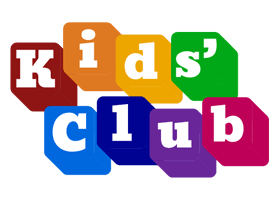Summer Spanish Activities for Kids
Alexis K Fishbaugh – June 28, 2024
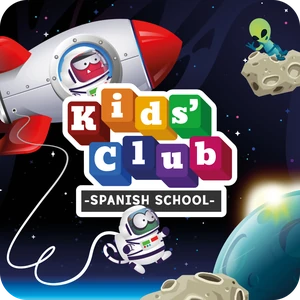

Alexis K Fishbaugh – June 28, 2024
Engaging in these activities not only helps children stay active and entertained but also provides a valuable opportunity to immerse themselves in a new language. Below is a detailed guide outlining various summer activities that can be conducted to help children improve their Spanish skills, ensuring that their learning continues even during the vacation months.
Spanish storytelling sessions are organized to foster language development and creativity. Children are gathered, and Spanish stories are read to them. This method has been found effective in improving listening and comprehension skills. Stories rich in cultural elements are chosen to enhance understanding of Spanish-speaking cultures.
In practice, families can visit local libraries that host bilingual storytelling sessions. If none are available, a virtual storytelling session can be arranged with a native Spanish speaker. For example, parents can find online platforms where Spanish-speaking storytellers read popular children’s books. These sessions can be scheduled weekly to ensure regular exposure to the language. Additionally, apps like Libby can be used to borrow Spanish audiobooks, making it convenient to listen during road trips or relaxing at home.
Cooking classes in Spanish are conducted to combine language learning with culinary skills. Traditional Hispanic recipes, such as paella, churros, tacos, empanadas, and arepas, are prepared by the children under the guidance of an instructor. The entire process, from reading the recipe to following cooking instructions, is carried out in Spanish. This immersive experience helps children learn practical language skills while enjoying delicious food.
To implement this at home, families can join online cooking classes hosted by Spanish-speaking chefs on platforms like Cocina Hispana and La Cocina de Mamá. Ingredients can be purchased from local Hispanic grocery stores, allowing children to learn relevant vocabulary. During the cooking sessions, instructions are followed in Spanish, and children can practice speaking by asking questions and describing their actions in Spanish. Another option is to participate in community events where Spanish cuisine is celebrated, such as attending a local Hispanic food festival or visiting a cultural center that offers cooking demonstrations, offering both a cultural and culinary experience.
Workshops focusing on Spanish music and dance are held to expose children to the rhythm and culture of Spanish-speaking countries. Flamenco, salsa, and other traditional dances are taught by experienced instructors. Songs in Spanish are sung, and the lyrics are analyzed to improve language skills. These workshops provide a lively and engaging way to learn Spanish through movement and music.
Families can find local dance studios that offer summer workshops in Latin dance styles. If in-person classes are not available, online platforms like YouTube provide tutorials for dances like Flamenco or Salsa. Channels such as “Mi Esquina Flamenca” and “Salsa and Bachata Dance Academy” offer excellent tutorials and dance lessons. Families can create a playlist of popular Spanish songs and have dance parties at home, where everyone practices the moves they’ve learned. Attending local cultural festivals that feature Spanish music and dance performances is another excellent way to immerse in the language and culture.
Art and craft projects inspired by Spanish culture are created. Activities such as making piñatas, designing masks for “Día de los Muertos,” and painting tiles in the style of Spanish mosaics are included. Instructions and discussions during these projects are conducted entirely in Spanish. This hands-on approach helps children learn new vocabulary related to colors, shapes, and cultural symbols.
To bring this activity to life, families can purchase art supplies from craft stores and follow Spanish-language tutorials available online. Websites such as “Etsy” and “Party City” offer a variety of supplies for making piñatas and other cultural crafts. Virtual art classes with Spanish-speaking instructors can also be arranged. For a more immersive experience, families can visit art museums with Spanish exhibits and use the museum’s educational resources to learn about the artworks in Spanish. Hosting an art-themed playdate with other families interested in learning Spanish can also make the experience more social and engaging.

“Channels such as “Mi Esquina Flamenca” and “Salsa and Bachata Dance Academy” offer excellent tutorials and dance lessons.”
Nature walks with a focus on Spanish vocabulary are organized. Children are taken to parks and natural reserves where they learn the names of plants, animals, and natural features in Spanish. Guides fluent in Spanish explain the significance of various species and their habitats. This activity combines outdoor exploration with language learning, making it an enjoyable and educational experience.
For a real-world application, families can plan trips to national parks or botanical gardens that offer bilingual tours. For instance, a trip to the Sonoran Desert in Arizona can be both an adventure and a learning experience if guided tours in Spanish are available. Parents can use apps like iNaturalist, which can be set to Spanish, to identify plants and animals during hikes.
Traveling to Latin American countries, such as visiting the pyramids of Mexico or Machu Picchu in Peru, provides a profound cultural immersion where children can practice Spanish in a natural setting while learning about history and nature. Exploring the ancient ruins of Teotihuacán in Mexico, children can marvel at the Pyramid of the Sun and the Pyramid of the Moon while learning about the fascinating history of the Aztec civilization. Guided tours in Spanish help them practice language skills while absorbing historical knowledge.
Machu Picchu, the iconic Incan citadel in Peru, offers another incredible experience. Walking through the ancient city, children can learn about the Incan Empire’s engineering marvels and cultural heritage. Spanish-speaking guides can explain the significance of each structure, from the Temple of the Sun to the Intihuatana stone, providing an immersive language and history lesson.
Other notable sites include the Sacred Valley in Peru, where children can explore traditional Andean villages and archaeological sites, enhancing their understanding of indigenous cultures and their Spanish-speaking skills.
In Spain, visiting historical landmarks such as the Alhambra in Granada, a stunning example of Moorish architecture, allows children to delve into the country’s rich cultural tapestry. Exploring the intricate palaces and lush gardens while listening to Spanish narratives about the site’s history can be both educational and captivating.
The Sagrada Familia in Barcelona, with its unique architecture by Antoni Gaudí, provides another immersive experience. Guided tours in Spanish explain the symbolism behind Gaudí’s designs and the history of this still-unfinished basilica, making it a perfect blend of art, history, and language learning.
The historic city of Toledo, known for its medieval architecture and multicultural heritage, is another excellent destination. Walking through its narrow streets and visiting landmarks like the Toledo Cathedral and the Alcázar, children can engage with Spanish-speaking guides and deepen their appreciation for Spain’s diverse history.
The Galápagos Islands in Ecuador offer an extraordinary opportunity to learn about biodiversity in Spanish. Guided tours around the islands introduce children to unique wildlife, such as giant tortoises and marine iguanas, with explanations given in Spanish. This hands-on learning experience enhances both their ecological knowledge and language skills.
The number of sites to visit is innumerable. From the vibrant streets of Buenos Aires in Argentina to the ancient Mayan ruins of Tikal in Guatemala, the possibilities for cultural immersion and language practice are endless. These experiences not only enrich children’s understanding of the Spanish language but also deepen their appreciation for the diverse cultures and histories of the Spanish-speaking world.
Cultural festivals celebrating Spanish traditions are organized. Events such as “Fiesta de San Fermín” and “Carnaval” are recreated, and children participate in various activities associated with these festivals. Traditional costumes are worn, and typical foods are prepared and enjoyed. These festivals offer an immersive experience in Spanish culture and language, making learning both fun and memorable.
In the U.S., many cities host Hispanic cultural festivals, especially during the summer. Families can attend events like Fiesta DC in Washington, D.C., or the Puerto Rican Day Parade in New York City. These events often feature parades, music, dance, and food from various Spanish-speaking countries. Participating in these festivals allows children to hear Spanish spoken in different dialects and see cultural traditions firsthand. At home, families can host mini-festivals by inviting friends over to celebrate with traditional food, music, and activities, all while practicing Spanish.
A pen pal program is established to connect children with Spanish-speaking peers. Letters and emails are exchanged in Spanish, allowing children to practice writing and reading in a real-world context. Friendships are formed, and cultural exchange is promoted through this program. This activity enhances language skills and provides insights into the daily lives and cultures of Spanish-speaking countries.
To set up a pen pal program, families can join international pen pal organizations or online platforms that match students with peers from Spanish-speaking countries. One such platform is Students of the World, which connects children and teenagers from around the globe. Another excellent resource is PenPal Schools, which offers guided projects and matches students based on age and interests.
Writing letters about daily life, hobbies, and cultural traditions helps children practice their Spanish in a meaningful way. For instance, a child in the U.S. might write to their pen pal in Spain about their favorite sports and ask about popular activities in Spain. In return, they might learn about local festivals and traditions directly from their pen pal’s experiences. Receiving replies from their pen pals not only improves their reading skills but also builds a personal connection to the Spanish language and its speakers, making the learning process engaging and enriching.
Children are encouraged to research and present topics related to Spanish-speaking cultures. Topics such as famous landmarks, traditional clothing, and regional cuisines are explored. Presentations are made in Spanish, and visual aids are used to support the information. This activity develops research skills and confidence in public speaking.
To implement this activity, families can assign each child a specific topic related to a Spanish-speaking country. Research can be conducted using Spanish-language resources available online or at local libraries. Websites like National Geographic Kids and BBC Bitesize offer valuable information and educational resources. Children create posters, slideshows, or videos to present their findings. Hosting a “Spanish Culture Night” where each child presents their topic to family and friends can make the experience more formal and rewarding. This practice not only improves their Spanish but also broadens their understanding of the diverse cultures within the Spanish-speaking world.
“A pen pal program is established to connect children with Spanish-speaking peers. Letters and emails are exchanged in Spanish, allowing children to practice writing and reading in a real-world context. “

Movie nights featuring Spanish films are held to improve listening skills and cultural understanding. Animated films and age-appropriate movies in Spanish are selected. Subtitles are used to aid comprehension, and discussions are conducted after each film to reinforce language learning. This passive yet engaging activity helps children immerse themselves in the Spanish language.
Families can choose from a variety of Spanish-language films available on streaming services like Netflix or Disney+. Some recommended movies include:
“El Libro de la Vida” (The Book of Life): This animated film explores Mexican folklore and traditions, particularly the Day of the Dead. Its vibrant visuals and engaging story make it a great choice for family viewing.
“Encanto”: This magical tale follows the Madrigal family in Colombia, each member blessed with unique abilities. The film beautifully showcases Colombian culture and music.
“Coco”: This heartwarming film tells the story of Miguel, a young boy who dreams of becoming a musician and embarks on an adventure in the Land of the Dead. It celebrates Mexican traditions and the importance of family.
“Tad, the Lost Explorer” (Las aventuras de Tadeo Jones): This fun adventure movie follows the Indiana Jones-like character Tad as he embarks on a thrilling journey. It provides an exciting and engaging way for children to learn Spanish.
After watching, discussions about the film’s themes, characters, and cultural elements are held in Spanish to reinforce learning. Hosting regular movie nights with friends and family can turn this activity into a fun tradition while providing consistent exposure to the language.
Free Spanish worksheets are provided regularly by Kids’ Club Spanish School to support language learning. These worksheets, available in both fillable digital formats and printable versions, can be completed on a tablet or smartphone in color, or printed for traditional use with a pencil and eraser. These resources are published regularly through our newsletter and social media channels, and they are available for direct download without the need for registration.
Each worksheet set typically includes flashcards for learning the target vocabulary, followed by a variety of exercises such as crossword puzzles, word searches, spot-the-difference games, reading comprehension tasks, true or false questions, etc… The variety of activities ensures that learning remains engaging and enjoyable. By following our social media posts, users can also access audio recordings of native speakers pronouncing the target vocabulary, which helps perfect pronunciation.
In conclusion, numerous activities are available to help children learn Spanish during the summer. From storytelling and games to cooking and cultural festivals, each activity provides a unique and engaging way to practice Spanish. By incorporating language learning into fun and practical experiences, children are encouraged to develop their skills and gain a deeper appreciation for Spanish-speaking cultures. Through these activities, a solid foundation in the Spanish language can be built, paving the way for continued learning and cultural exploration.
Just as our summer activities blend fun and education, Kids’ Club Spanish School invites your children to embark on an equally enriching journey into the Spanish language. Our online classes are designed to be as captivating and diverse as the engaging summer activities we’ve discussed.
Sign up your children today at www.kidsclubspanishschool.com for two free trial Spanish lessons, and let them experience the joys and educational benefits of our immersive Spanish program.
 Kids' Club Spanish School, LLC
https://kidsclubspanishschool.com/wp-content/uploads/2024/07/blog_summer-spanish-activities-for-kids-3.png
807
800
Alexis Fishbaugh
https://cdnwp.kidsclubspanishschool.com/wp-content/uploads/2025/05/kids-club-spanish-school-header-logo.webp
Alexis Fishbaugh2024-07-28 22:48:532024-07-28 22:48:53Summer Spanish Activities for Kids
Kids' Club Spanish School, LLC
https://kidsclubspanishschool.com/wp-content/uploads/2024/07/blog_summer-spanish-activities-for-kids-3.png
807
800
Alexis Fishbaugh
https://cdnwp.kidsclubspanishschool.com/wp-content/uploads/2025/05/kids-club-spanish-school-header-logo.webp
Alexis Fishbaugh2024-07-28 22:48:532024-07-28 22:48:53Summer Spanish Activities for Kids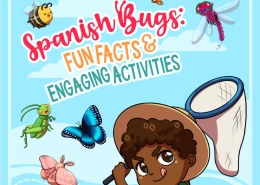 Kids' Club Spanish School, LLC
https://kidsclubspanishschool.com/wp-content/uploads/2024/05/blog-spanish-bugs-fun-facts-engaging-activities-101.webp
800
800
Alexis Fishbaugh
https://cdnwp.kidsclubspanishschool.com/wp-content/uploads/2025/05/kids-club-spanish-school-header-logo.webp
Alexis Fishbaugh2024-05-26 18:28:052024-07-21 05:53:07Spanish Bugs: Fun Facts and Engaging Activities
Kids' Club Spanish School, LLC
https://kidsclubspanishschool.com/wp-content/uploads/2024/05/blog-spanish-bugs-fun-facts-engaging-activities-101.webp
800
800
Alexis Fishbaugh
https://cdnwp.kidsclubspanishschool.com/wp-content/uploads/2025/05/kids-club-spanish-school-header-logo.webp
Alexis Fishbaugh2024-05-26 18:28:052024-07-21 05:53:07Spanish Bugs: Fun Facts and Engaging Activities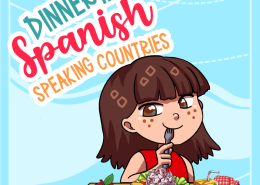 Kids' Club Spanish School, SL
https://kidsclubspanishschool.com/wp-content/uploads/2024/04/dinner-in-spanish-speaking-countries.png
800
800
Alexis Fishbaugh
https://cdnwp.kidsclubspanishschool.com/wp-content/uploads/2025/05/kids-club-spanish-school-header-logo.webp
Alexis Fishbaugh2024-04-25 12:22:352024-07-21 05:40:48Dinner in Spanish Speaking Countries
Kids' Club Spanish School, SL
https://kidsclubspanishschool.com/wp-content/uploads/2024/04/dinner-in-spanish-speaking-countries.png
800
800
Alexis Fishbaugh
https://cdnwp.kidsclubspanishschool.com/wp-content/uploads/2025/05/kids-club-spanish-school-header-logo.webp
Alexis Fishbaugh2024-04-25 12:22:352024-07-21 05:40:48Dinner in Spanish Speaking Countries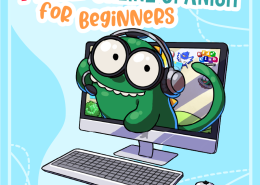 Kids' Club Spanish School, LLC
https://kidsclubspanishschool.com/wp-content/uploads/2024/03/free-online-spanish-for-beginners-squared-ad.png
800
800
Alexis Fishbaugh
https://cdnwp.kidsclubspanishschool.com/wp-content/uploads/2025/05/kids-club-spanish-school-header-logo.webp
Alexis Fishbaugh2024-03-29 13:09:202024-05-01 14:54:20Free Online Spanish Classes for Beginners
Kids' Club Spanish School, LLC
https://kidsclubspanishschool.com/wp-content/uploads/2024/03/free-online-spanish-for-beginners-squared-ad.png
800
800
Alexis Fishbaugh
https://cdnwp.kidsclubspanishschool.com/wp-content/uploads/2025/05/kids-club-spanish-school-header-logo.webp
Alexis Fishbaugh2024-03-29 13:09:202024-05-01 14:54:20Free Online Spanish Classes for BeginnersClick here to add your own text
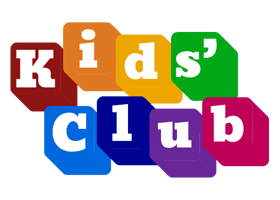
Join the fun and come learn Spanish online with us! Native certified teachers making learning Spanish certifiably fun

 Kids' Club Spanish School, LLC
Kids' Club Spanish School, LLC Olympic Games in Spanish Speaking Countries
Olympic Games in Spanish Speaking Countries